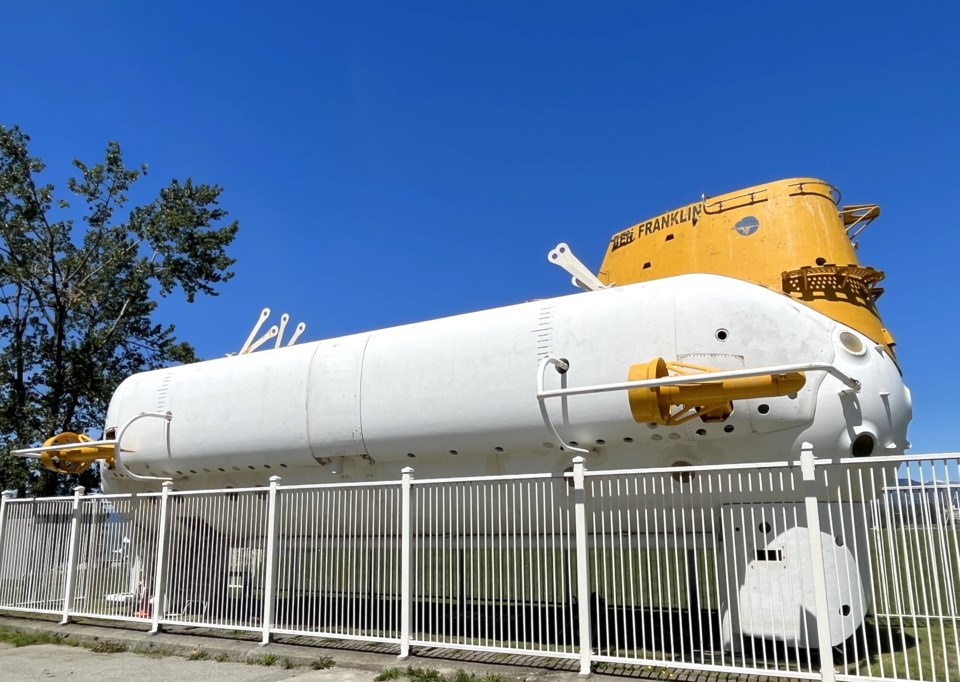Vancouver's long been associated with technology and scientific research.
While the city doesn't have the oldest research facilities in the world, or even Canada, that hasn't hampered the city at all, with it quickly catching up to other locations around the world in different fields.
Nowadays there are leaders in biotechnology, robotics, medicine, biology and more working, teaching and learning throughout the city, either at universities or private enterprises.
Here are some facts about the world of science in Vancouver.
1. It's home to
While physics isn't one of the sciences Â鶹´«Ã½Ó³»is necessarily famous for, it's actually home to one of the cutting-edge labs in the world.
Part of that is the largest cyclotron of its kind in the world at 18 meters across.
"[It] accelerates negative hydrogen ions to 75% the speed of light to produce intense proton beams for rare isotope production and a variety of other particle physics applications," reads the website for the TRI University Meson Facility.
The name comes from its founding; while it is at UBC, SFU and UVic were involved. Now 19 universities from across Canada are part of it.
2. A local company is a and is "on a mission to create the world's first human-like intelligence in general-purpose robots"
Do you remember Data from Star Trek: The Next Generation? Or C-3PO? Or any other robot that looked like a human and could do human tasks?
That's essentially the goal of , though they're not aiming quite so lofty right now.
As stated on their website, they're trying to figure out "how to build a human-like brain and system that’s capable of executing human-like tasks in a safe way."
And while lots of researchers may say they're trying to do something like this, Sanctuary AI's Phoenix may be closer than any other. Recently, Bloomberg called it the "."
In videos with it, the Phoenix is shown to have very human-like hands and dexterity, able to play chess while controlled by a human.
At the same time they're trying to develop new AI that'll allow them to work in the real world.
3. A UBC professor
While UBC has had a few Nobel laureates work there, only one has won one of the famed prizes while on the university's staff.
Dr. Michael Smitth won the 1993 Nobel in Chemistry for his work on DNA. Specifically, it was for research into a technique of altering DNA sequences. While it may sound futuristic for 1993, his research started in the 1970s.
He shared the 1993 prize with another researcher working on DNA, but not the same ideas. He directed half his prize money to researchers working on schizophrenia and half to Science World and the Society for Canadian Women in Science and Technology.
4. If you volunteer enough you can use a
Buying a huge telescope to do research on the stars is too pricey for most people, and becoming an astrophysicist or researcher might not be in the cards for everyone.
However, there's another way to get research time on a huge telescope in Metro Vancouver.
The Trottier Observatory offers a pathway, though it will take time, and membership to the Â鶹´«Ã½Ó³»branch of the Royal Astronomical Society of Canada (RASC).
"Members of the RASC Â鶹´«Ã½Ó³»can become part of the Observatory team," reads the observatory's website. "Following a period of training on the operations of the telescope, RASC Â鶹´«Ã½Ó³»members can assist at public observing events as well as do their own research and/or astrophotography."
5. A historic research vessel is sitting in Kitsilano
The Ben Franklin is in an odd spot, given its history.
The unique submersible was built in 1968, and created to allow a six-person team to live underwater for a month (that part of it got NASA interested too, since spaceflight was new).
While most submarine vessels are built to drive places, the Ben Franklin was designed to just go with the flow, literally.
It was dropped in off the coast of Florida with neutral buoyancy and allowed to just float along between 600 and 2,000 feet down. Around 30 days later it popped up again, south of Halifax.
It was used a few more times (Robert Ballard, who found the Titanic got his start on board) but it was decommissioned in 1971. Eventually it was moved to the Â鶹´«Ã½Ó³»Maritime Museum, where it sits today.



